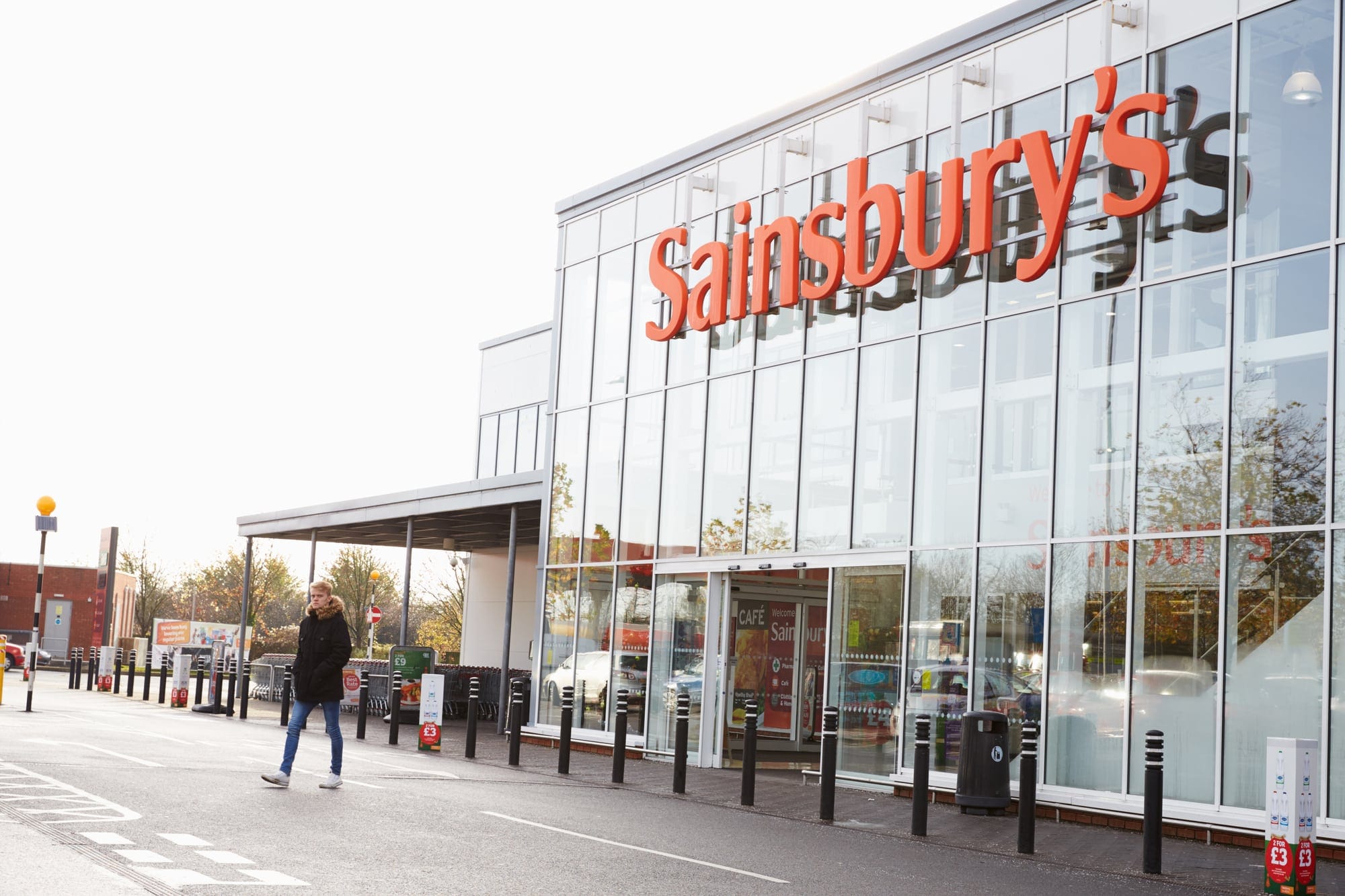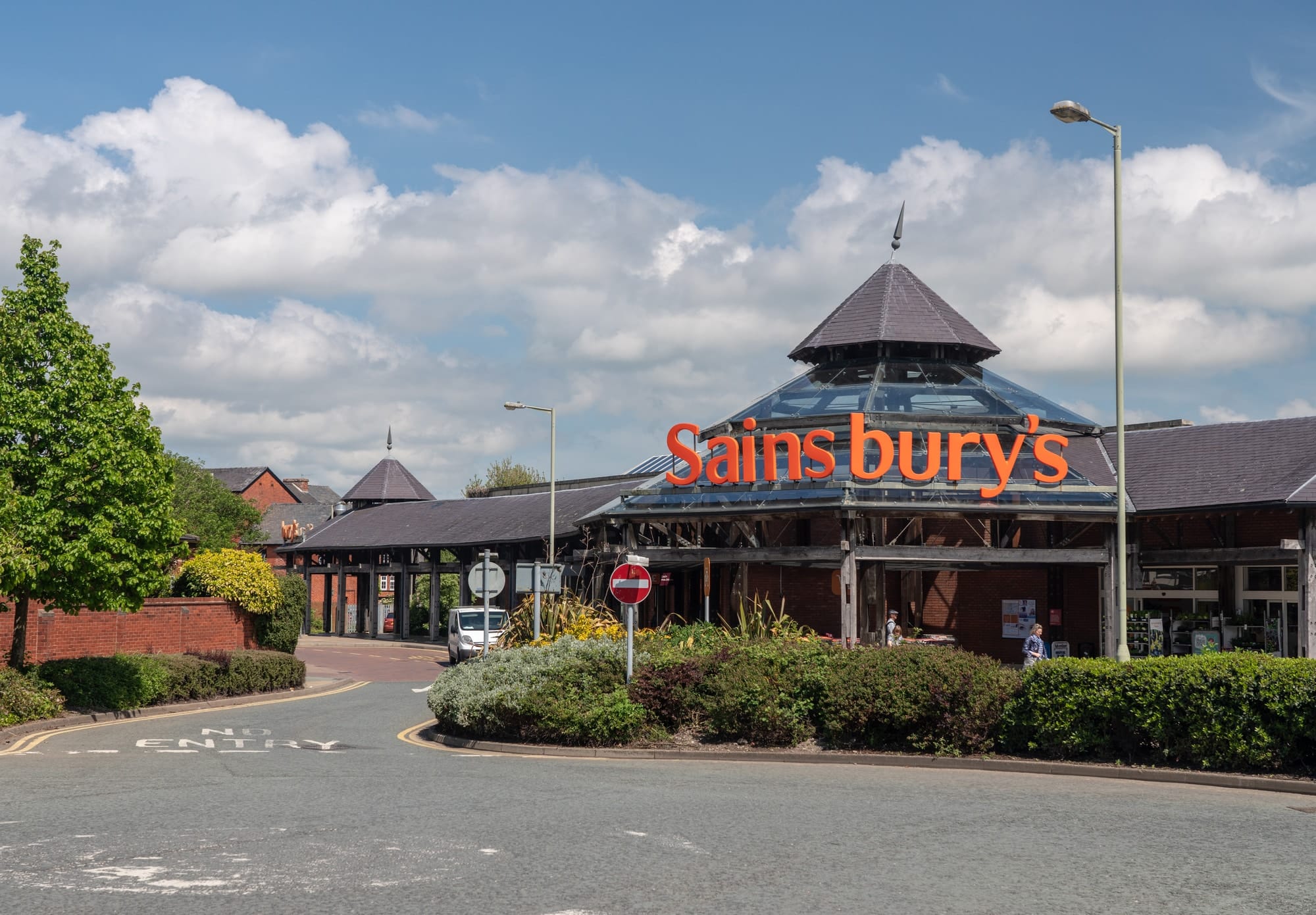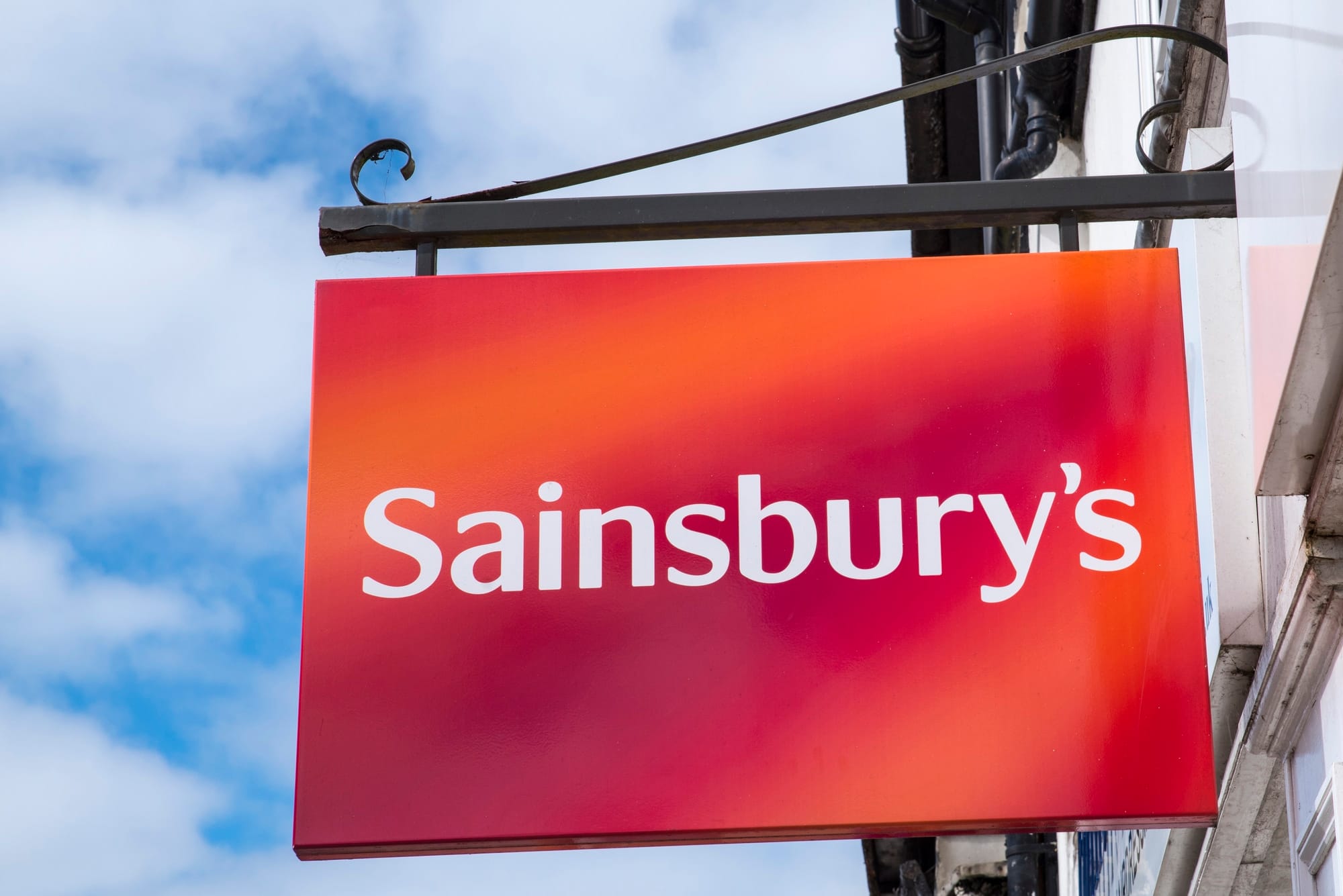The residents of the UK are proud of three things they have. First, it's obviously the king and the royal palace. Second, the greatest rock band ever, Led Zeppelin, and third, could be Sainsbury's.
You might be thinking I've lost it, but no. Sainsbury's is considered among the UK's best supermarkets. If you ask UK citizens, it is nearly impossible that you'll ever find someone who hasn't visited Sainsbury's.
Sainsbury's is a true representative of the UK's culture and ideology. Besides being an exemplary supermarket, Sainsbury's also reflects the idea of providing healthy food at low prices.
Since Sainsbury's is considered the face of the UK and it has become the identity of the UK due to its rising fame, today we have decided to conduct Sainsbury's SWOT Analysis.
However, before we proceed to the SWOT analysis, let's have a detailed look at the history and operations of Sainsbury's so that we can understand what the hype surrounding Sainsbury's is all about.

To start off, you should know that Sainsbury's is one of the top supermarkets in the UK. It is among some of the world's biggest supermarkets that provide the opportunity to its customers to buy groceries, clothing, and other products of essential use at low prices.
Currently, the network of Sainsbury's is widespread across the UK like a net. However, it had humble beginnings. The foundations of Sainsbury's were laid by a couple who opened a small dairy shop at 173 Drury Lane, London, in 1869.
Soon after the store was established, it became popular due to its good quality and low-priced products. In 1882, Sainsbury's started expanding its operations in the UK.
After two years of expanding, Sainsbury's started launching its own products. Initially, it started by introducing self-made Sausages. Later, other products, such as tea, were introduced.
The British markets observed a revolution in the 1950s when Sainsbury's decided to open its first self-service store, where people would help themselves get the desired products.
In the coming years, Sainsbury's kept on innovating and expanding. For example, it started making shopping bags from recycled materials and introduced its own clothing. Later, it also focused on fulfilling its corporate social responsibility by launching different programs for the vulnerable segment of society.
All these actions helped the brand to grow further. In the previous year, Sainsbury's generated revenue of $38.004 billion. Currently, it is considered among the world's best supermarkets.
Moreover, it has expanded its operation by opening hundreds of convenience stores and supermarkets. Sainsbury's is also responsible for providing employment to more than 189,000 people without discrimination.
Now that we have gained enough insight into Sainsbury's let's proceed with its SWOT analysis. To do that, you must know what SWOT analysis is. The SWOT analysis is a technique to analyze the internal and external forces that impact the operations of a business.
A SWOT template is prepared by businesses to analyze a company's strengths, weaknesses, opportunities, and threats so that improvements can be made. To get a better understanding of SWOT analysis, look at some examples of SWOT analysis so that you can proceed.
Strengths of Sainsbury's

Every company possesses some strengths that help it become successful and overtake its competitors. Therefore, all the companies constantly try to increase their strengths so that they can gain a maximum share in the market.
This section of the SWOT analysis will highlight some of the factors considered as the strengths of Sainsbury's.
Strong Marketing
No matter how good a brand is, if it is not marketed in the right way, it'll always stay underrated. Companies spend millions of dollars on marketing since they know having a good marketing strategy is as essential as making good products.
Sainsbury's realizes the importance of good marketing strategies, which is why it pays so much attention to marketing. For example, Sainsbury's is one of the biggest sponsors of the Paralympics. Moreover, it has hired many influencers and celebrities like Ellie Simmonds, David Beckham, and Jamie Oliver as Sainsbury's ambassadors.
Wide Spread Operations
The primary purpose of doing business is to make a profit, and brands realize that expanding their operations would increase the profit. Expansion of operations is a dream for every business. However, not all the brands manage to expand their operations as Sainsbury's did.
Sainsbury's was established 153 years ago. From there onwards, it started expanding its operations slowly and gradually. Now, working hard day and night, Sainsbury's has managed to open more than 600 supermarkets and 800 convenience stores.
Such accessibility poses an attraction for customers, which results in an increase in the brand's consumer base.
Listed on Stock Exchange
Many businesses initially started as private limited companies and ended up getting listed on the stock exchange. The reason is to generate funds by selling the company shares instead of getting funds through loans, etc.
Sainsbury's was also established as a private limited business initially. However, in the 1970s, the business decided to get listed on the stock exchange and change its status to a public company. By doing so, Sainsbury's generated huge sums of money by selling its shares, which helped it expand and solved its cash flow problems.
Weaknesses of Sainsbury's

Where a company possesses strengths, it also possesses some weaknesses. The weaknesses of a company reflect the areas where it lacks. Identifying the weaknesses is very important since it is the first step of converting weaknesses into strengths.
Although it seems that Sainsbury's wouldn't possess any weaknesses, there are areas in which work needs to be done. Let's have a look at them.
Lower Profits
Companies are constantly fighting to attain higher profits since that is the main driving force of doing business. However, It's not easy to maximize profits. Companies can make good profits only if the market environment allows them to make a good profit. For example, the competition must be limited to make a good profit.
Due to high competition in the market, Sainsbury's is failing to generate high profits. As a result, in the previous year, Sainsbury's observed a loss in net income.
The brand incurred a loss because Sainsbury's has been trying to keep prices lower than the competition. Still, with the growing competition in the retail space and the added risk of online retailers, it is no longer sustainable.
Lack of International Expansion
Brands that plan to dominate the market look for ways to expand their operation internationally once they get well established in the home country. Despite having more than 14,00 branches in the UK, Sainsbury's didn't prefer to expand its operations abroad the way it could.
Exploring the international markets would have increased the revenue and Sainsbury's share in the international market.
High Cost of Operations
Businesses are always looking to minimize their cost of operations to enjoy maximum profits. A business with a high cost of operations will have higher expenses. As a result, less profit will be earned.
Since the operations of Sainsbury's are widely spread, a lot of funds are required to keep the business running. Due to the high operating costs, the profit margins of Sainsbury's have decreased.
Opportunities Available for Sainsbury's
Business is the skill to avail right opportunities at the right time. Therefore, to succeed, it is necessary to consider the opportunities available to them timely.
This section of the SWOT analysis will discuss the opportunities ahead for businesses.
International Markets
Sainsbury's has always been confined to a more or less similar geographical area. As we discussed earlier, Sainsbury's is considered one of the UK's top supermarkets. However, it lacks international recognition. Now that Sainsbury's has covered a significant area in the UK by opening its outlet, it can spread its operations internationally.
Plenty of developed and developing countries would love to have Sainsbury's. By moving to the international market, Sainsbury's will be able to increase its revenue and gain international recognition.
Growth In Rural Areas
Most supermarkets and retailing businesses target urban areas to carry out their operations. There are plenty of reasons, such as Urban areas having better transport facilities. Moreover, people in urban areas tend to have higher buying power. However, with time things have changed.
Sainsbury's has a golden opportunity to tap the market of rural areas by opening supermarkets and retailing stores in the rural areas since rural areas are no longer limited to using mass products and generic brands.
Rural people today are using branded products across all categories, which provides Sainsbury's an opportunity to penetrate the rural areas.
Can Merge With Other Brands
Mergers and acquisitions are common practices in business to attain growth. Businesses tend to acquire their competitors to grow and merge with more prominent brands to attain growth.
In 2019, Sainsbury's tried to merge operations with Asda, but the regulation watchdog blocked it. The merger would have helped to elevate the company's market position, providing momentum for its growth.
However, Sainsbury's can continue to merge with other brands. This would help expand the customer base and allow them to compete on quality in a fiercely competitive market.
Threats Faced by Sainsbury's

Threats are the external factors that impact the operations of a company. They reflect the danger that lies ahead for the company. The purpose of identifying threats in the last section of the SWOT analysis is to make a strategy in advance to deal with these threats.
In this section, we will discuss the threats faced by Sainsbury's from the external environment.
Rising Global Inflation
Ever since COVID-19 hit, an increasing wave of inflation has been observed. After the economies started operating, the prices started going up. Moreover, earlier this year, after Russia invaded Ukraine, inflation further increased.
Rising inflation can threaten Sainsbury's since as inflation increases, the buying power of people decreases. This will decrease the number of customers of Sainsbury's. As a result, the revenue of Sainsbury's will fall.
Pandemic
COVID-19 was the worst pandemic that took place in the recent past. As a result, businesses worldwide observed severe losses due to the lockdowns and decreased demand for products. Sainsbury's was also among many affectees of the pandemic.
During COVID-19, Sainsbury's observed a loss of $304.4 million. The lockdowns have now been lifted, and things seem pretty normal. However, the threat of the pandemic is still present for Sainsbury's.
Globalization
Technological development has made the world a global village. As a result, many businesses and companies expanded their market and became global multinational brands. Such expansion of other competitive brands can be considered a threat to Sainsbury's.
For example, a new brand enters the market and captures Sainsbury's customers. This can result in severe customer loss, leading to financial losses.
Sainsbury's SWOT Analysis: Final Word
Today's article was about Sainsbury's, one of the leading businesses in the UK. Since Sainsbury's is considered among the top supermarkets in the UK, we decided to conduct its SWOT analysis.
First, we started off by giving an overview of the brand. Then, we discussed its operations and its 153 years old history. Through that, we got to know how Sainsbury's came with humble beginnings and then managed to dominate the markets of the UK by providing good quality products at a low price.
After gathering some useful information about Sainsbury's, we proceeded further to conduct Sainsbury's SWOT analysis, where we analyzed the internal and external factors that affect the operations of Sainsbury's.
The findings of this SWOT analysis can be presented better through a SWOT matrix or a SWOT Table. Looking at the SWOT matrix will make it easier for strategy makers to interpret the results of a SWOT analysis.
Assuming that you've reached this far reading this article, we can say that besides knowing the insights of Sainsbury's, you've also learned how to conduct a SWOT analysis.
Moreover, if you found this article interesting, then you will also enjoy reading Sainsbury's PESTLE analysis since it highlights the external factors affecting the operations of Sainsbury's.









